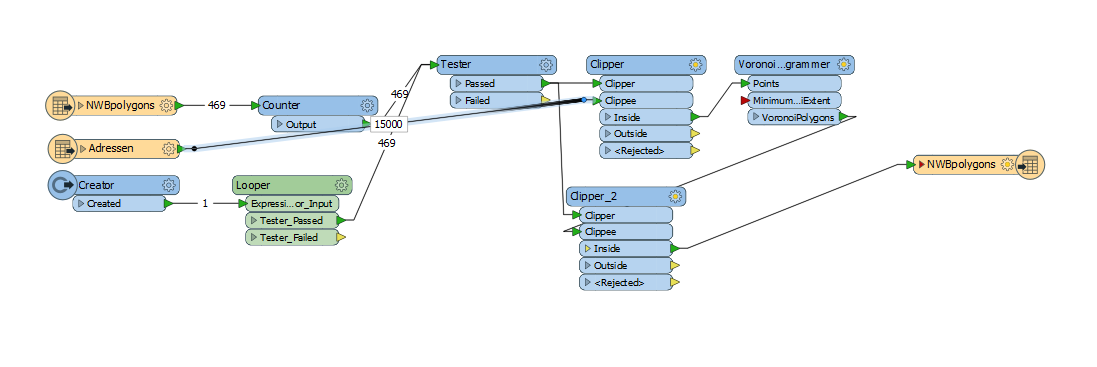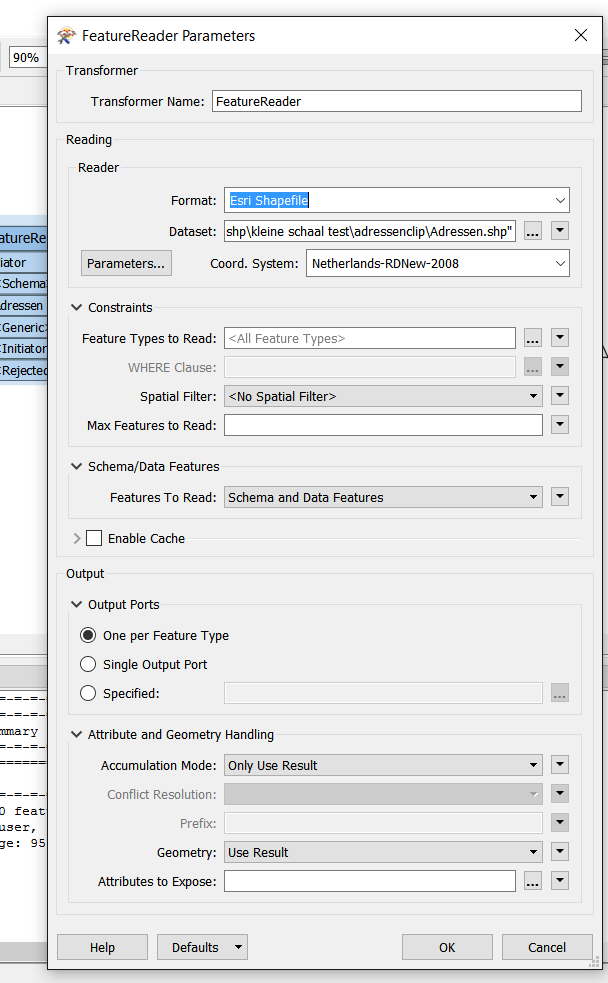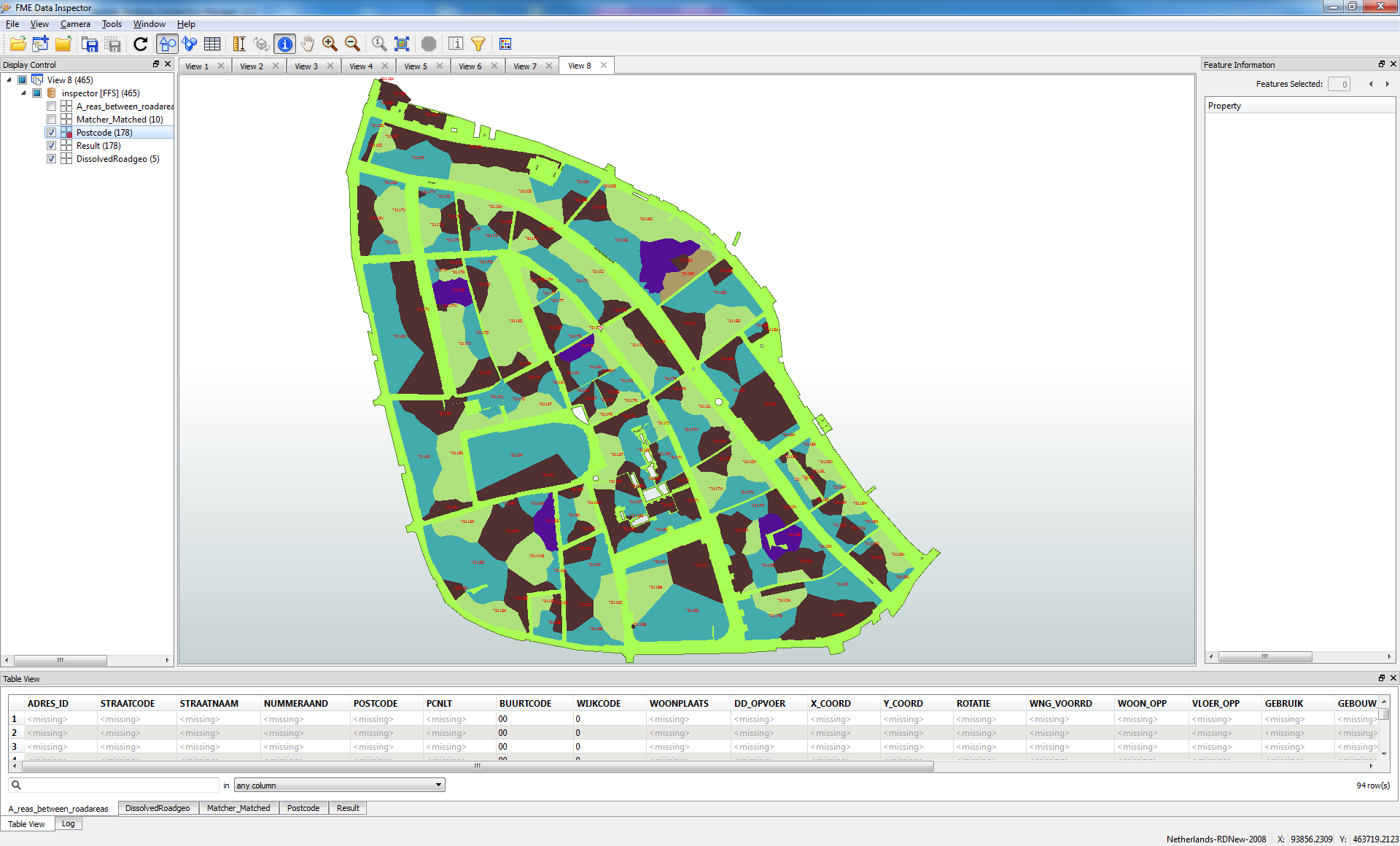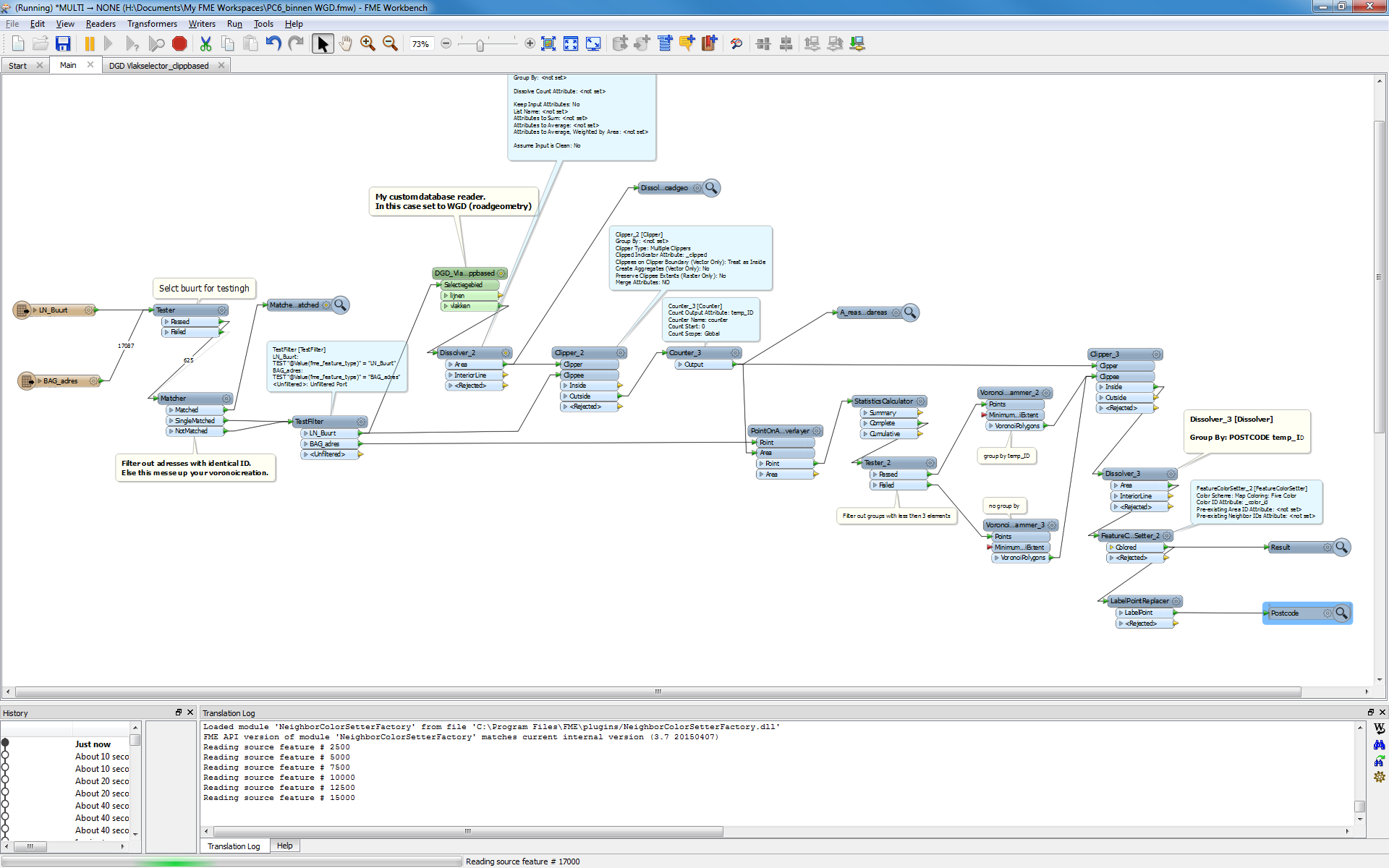For a project I'm working on I would like to make postal code areas which borders are nearby streats. To be able to do this I first turned the roads in to polygons. Next I would like to clip the postal code data to the area of the polygon it would fall into. Hereby it's very important that only one, of the many, polygons gets selected at the same time, as I only want the points which lie in one particular polygon to form voronoi polygons with eachother. The goal is to do this without using a python script and thus using only tools available in FME workbench. To be able to do this I wrote a simple looper which counts from 0 to 469. NWBpolyons are the road polygons, which I would like to select one by one. Adressen are the postal code points from which I would like to make Voronoi polygons within the road boundaries which surround them. The tester expression was quite simple in my mind. With the counter I count the polygons in the dataset, the attribute is called _count and the loop result is called _creation_instance. The tester expression thus is: _count = _creation_instance. My problem is that the tester won't run. Does anybody have an idea how to get the tester running, or how to surpass this problem?
regards, Bart





















